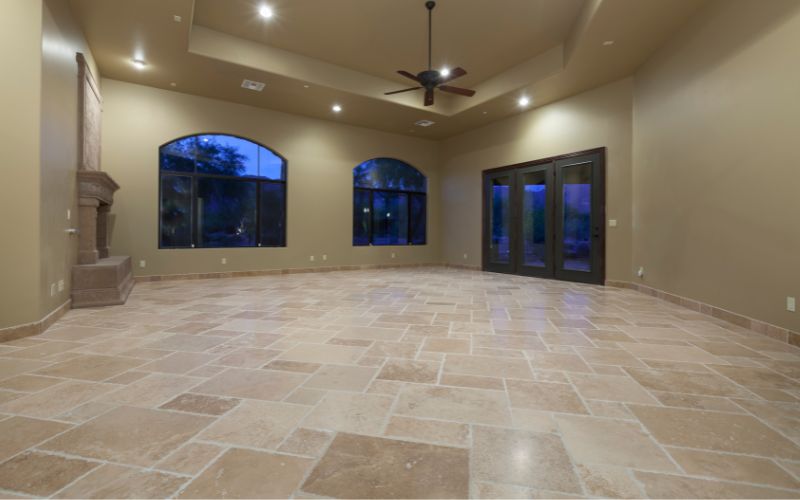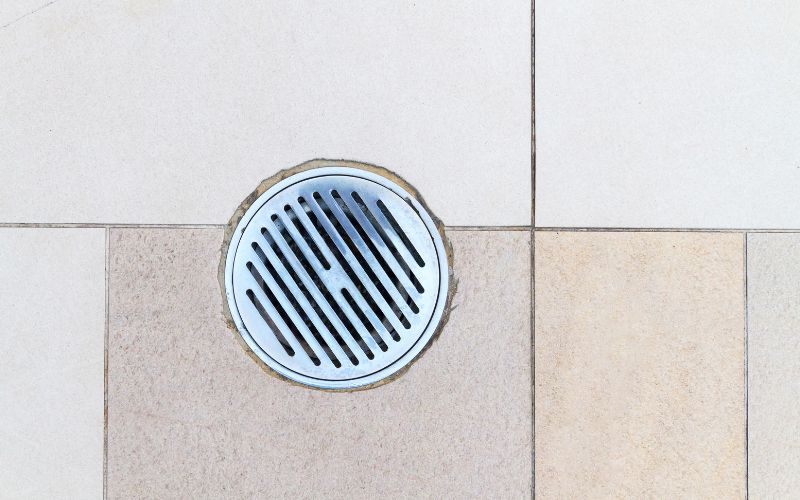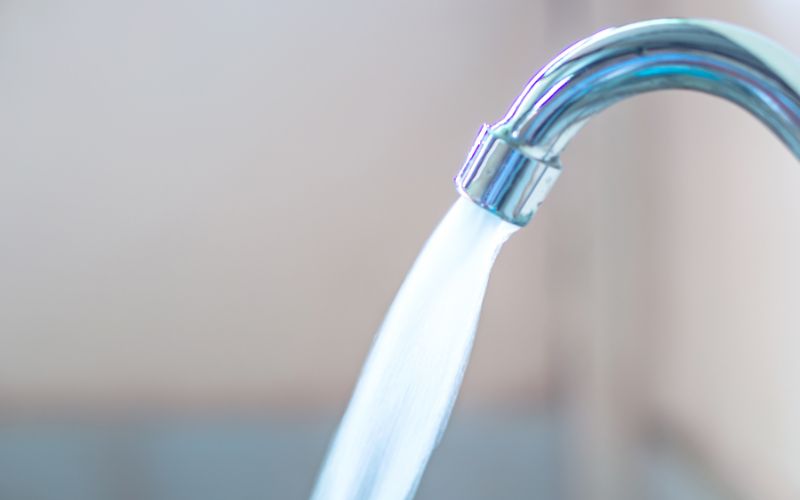Most people assume that a hot tub is only for use outside the home, but is that just what we’re conditioned to think by what we see in the media?
A hot tub is essentially just an oversized bathtub with soothing jets, so if you wanted to, then the theory is that you could have one inside your home.

Let’s take a look at whether you actually can set up an inflatable hot tub indoors, and some of the things you need to consider if you plan to.
Can you use an inflatable hot tub indoors?
While most people tend to set up their inflatable hot tubs outside the house, you can set one up indoors as well. Essentially, you can set up an inflatable hot tub anywhere, provided the floor is level, free of sharp edges, and can support the weight.
While it’s entirely possible to set up an inflatable hot tub inside, there are a few things you need to consider first. And there are also some advantages to doing so as well.
Things To Consider When Setting Up an Inflatable Hot Tub Inside
You can’t just set up an inflatable hot tub in any room inside your home. There are a number of things you need to check first, otherwise, your chosen location may not be suitable or even safe.
1. The flooring
No matter how careful you think you might be, it’s inevitable that water will spill outside of the hot tub when you’re using it – at the very least when you climb in and out.
Therefore, you want flooring that is water safe; that is, a floor that can absorb water and not get ruined. The best floors for this are vinyl and tile floors, specifically porcelain and ceramic tiles.

A wooden floor will absorb the water and after a while, start decaying. As a result, you may end up with some pretty hefty repair bills.
Similarly, a carpeted floor will get damp and start rotting after a while.
Concrete is another option, but it tends to be slippy. Vinyl and tile can be slippy too but if you make sure the floor is textured, that’ll help a lot.
Consider getting a non-slip mat and laying it under and around the inflatable hot tub to make it even safer. Another solution, albeit temporary, is putting a waterproof sheet under the base with towels around the tube to absorb the spilled water.
Read more: What To Put Under An Inflatable Hot Tub
2. Proper drainage
You can’t leave a hot tub full permanently. You need to fully drain it every six to eight weeks in order to give it a proper clean. And indoors, that’s a lot trickier – you can hardly just open the valve and let the water out.

As you don’t want to flood your house, make sure that your tub is conveniently close to an effective drainage system. Alternatively, you can buy a siphon hose to suck the water from the hot tub and drain it away without causing a mess.
3. Access to water
On average, an inflatable hot tub holds about 250 to 300 gallons of water. Filling it is therefore not a job you want to take on with a bucket.

Naturally, you’ll want to position your hot tub close to a tap. If not, put it somewhere you can access with a garden hose. As long as it’s within reach of a tap by a hose then you’ll be fine.
4. Adequate ventilation
Hot tubs produce steam when they’re being used. Not a huge amount – after all, the water’s not exactly at boiling point – but enough for the room to get humid. Without proper ventilation, this humidity can lead to damp – just as if you were taking a hot shower.
A build-up of moisture and dampness can damage your house and create an environment for mold to grow. To prevent this from happening, make sure that there’s adequate air circulation in the room housing the hot tub.

Also, keep the hot tub’s cover on when the tub is not in use. That’ll help keep the steam levels lower.
5. Access to power
Inflatable hot tubs need power to run. The pump and heater can’t operate without electricity. Therefore, you’ll want to make sure the hot tub is close to a power outlet.

You’ll want to avoid using power strips if you can. Hot tubs use a lot of power, which can overheat most power strips, plus they aren’t waterproof so any empty sockets in the strip could become a hazard.
6. The weight of the tub
Probably the biggest thing to consider when choosing where to situate a hot tub indoors. A full inflatable hot tub can be pretty heavy, so you want to check that the base is sturdy enough to accommodate the weight. When empty, an inflatable spa weighs only about 80 pounds.
That average weight goes up to 3,000 pounds when filled with water. If your floor is not strong enough, it may just crumble under the weight of the tub. If you aren’t sure about the capability of your floor to hold a full hot tub, then it is best to consult with a building inspector.
This small hot tub is one of the lightest when full, so it could be a good option for anyone wanting to put a hot tub upstairs or on a balcony (so long as you check first).
What Are the Advantages of Using an Inflatable Hot Tub Inside?
If you use an inflatable hot tub inside, you can use it at all times of the year, even when it’s cold and raining. It’s also cheaper to run during colder months, since the ambient air indoors will be warmer, meaning the heater has to do less work.
You may also enjoy the privacy of a hot tub inside your home, particularly if your yard or garden space is overlooked by your neighbors.
Check out this YouTube video where this inflatable hot tub gets set up indoors!
Can Inflatable Hot Tubs be used in Winter?
Inflatable hot tubs can be used during winter, even if situated outdoors. They’re resilient enough to withstand most weather conditions, although the heater will have to work a lot harder during the cold to keep the temperature of the water up.
If you live somewhere where the winters are particularly harsh, and you want to have your hot tub available all year round, then maybe consider putting it inside if you’ve somewhere suitable.
Final Thoughts
Putting an inflatable hot tub inside your home is actually a great idea, as long as you have somewhere suitable for it. An ideal location is one that has a level surface, is well ventilated, has access to both water and power, has an efficient drainage system, and can sustain the weight of a full inflatable hot tub.
That’s quite the checklist, so for a lot of people having an indoor inflatable hot tub won’t be possible. But if you have the option, and you don’t like the idea of neighbors watching you, or your winters are particularly rough, then go for it!

